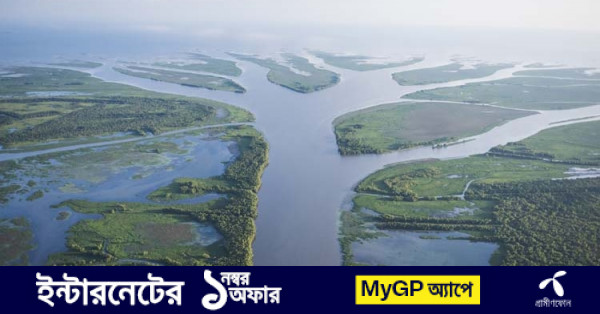Study reveals ancient quake that redirected Ganga’s course in Bangladesh


Scientists announced on Monday that they have discovered a 1km-to-1.7km-wide ancient riverbed, known as a paleochannel, situated 45km south of the present-day Ganga-Padma river’s main course. This paleochannel is a remnant of the river’s earlier path before the earthquake struck.
Bangladesh’s delta region. Photo: Collected from web
“>
Bangladesh’s delta region. Photo: Collected from web
A previously unidentified earthquake 2,500 years ago dramatically altered the course of the Ganga River, rerouting its primary channel through what is now Bangladesh and leaving behind a floodplain currently used for rice farming, according to a recent study.
Scientists announced on Monday that they have discovered a 1km-to-1.7km-wide ancient riverbed, known as a paleochannel, situated 45km south of the present-day Ganga-Padma river’s main course. This paleochannel is a remnant of the river’s earlier path before the earthquake struck.
The paleochannel, identified via satellite imagery, along with features known as sand dikes in the mud—indications of an earthquake-triggered process called liquefaction—suggests a magnitude 7 or 8 earthquake that occurred more than 180km away, the researchers reported.
“In delta regions, rivers typically shift over decades to centuries, which is not uncommon,” said Elizabeth Chamberlain, a geologist at Wageningen University in the Netherlands and the lead author of the study, in a telephone interview with The Telegraph. “But this was a sudden, significant geological event,” she added.
The study’s findings, published in the journal Nature Communications, highlight the susceptibility of the Ganga-Brahmaputra delta region in Bangladesh and eastern India to even moderate earthquakes.
“Geological records indicate that large earthquakes have struck Bangladesh and surrounding areas multiple times in both historical and prehistoric periods,” said Syed Humayun Akhter, a former geology professor at Dhaka University, now the vice-chancellor of Bangladesh Open University and a co-author of the study.
These earthquakes have left behind evidence such as sand dikes, altered terrain features, and river avulsions—the rapid abandonment of a river channel and the creation of a new one.
Scientists have documented over 100 river avulsions throughout history, including those of the Mississippi in the US, the Yellow River in China, and the Kosi in India.
“Most avulsions are naturally occurring river shifts. This is the first documented case of a major river avulsion linked to an earthquake,” said Michael Steckler, a geophysicist at the Columbia Climate School in the US and a member of the study team.
“The (Ganga) river shifted from flowing southeast along a path parallel but south of the current Ganges-Padma rivers to flowing down the Bhagirathi-Hooghly channel,” Steckler told The Telegraph via email.
The earthquake caused the Ganga’s main channel to shift westward to a north-south flow. However, subsequent changes in land elevation have since redirected the river into its current channel.
Between 1550 and 1650, the river shifted course again, moving eastwards to join the modern lower Meghna channel. “These later avulsions occurred over decades and were not triggered by earthquakes,” Steckler noted.
The researchers suggest that the earthquake 2,500 years ago may have been caused by either the slip of the oceanic crust under the continental plate below Bangladesh, Myanmar, and northeastern India or by the slip of the Indian plate beneath the Asian plate in the Himalayan region.
A previous study in 2016 by Akhter and US collaborators indicated that these zones were accumulating stress that could potentially lead to earthquakes similar to the one 2,500 years ago. A high-intensity earthquake in 1762 had even triggered a tsunami that traveled upriver and struck Dhaka.
The Ganga-Brahmaputra delta landscape rests atop a deep accumulation of mud layers—sediments carried downstream from the Himalayas into the delta—up to 30km thick. This mud is highly susceptible to liquefaction, a process where water-saturated mud layers behave like a liquid.
“The likelihood of large-magnitude earthquakes in the nearby Himalayan and Burmese fronts is significant,” Akhter said.
“The effects of strong shaking from such an earthquake would impact much of the country, including densely populated Dhaka. While large earthquakes are less frequent than severe floods, they can affect much larger areas and have lasting economic, social, and political consequences,” he added.
It remains unclear how the Ganga’s abrupt course change 2,500 years ago may have affected local communities, said Chamberlain, who specializes in studying how rivers change course and impact local populations.
“We can assume the event would have caused some population shifts and the emergence of new settlements—archaeological research may provide the answers,” Chamberlain concluded.



